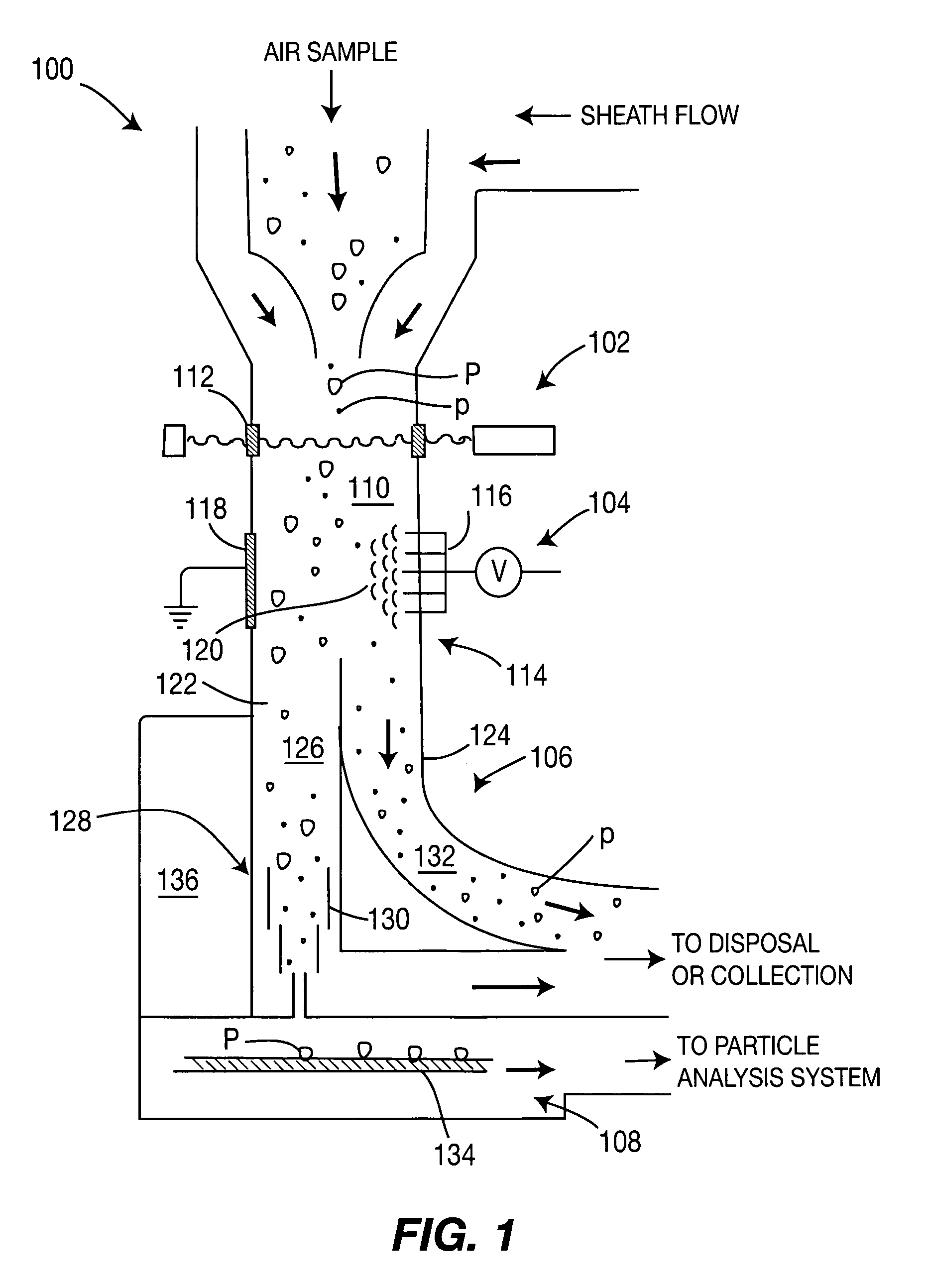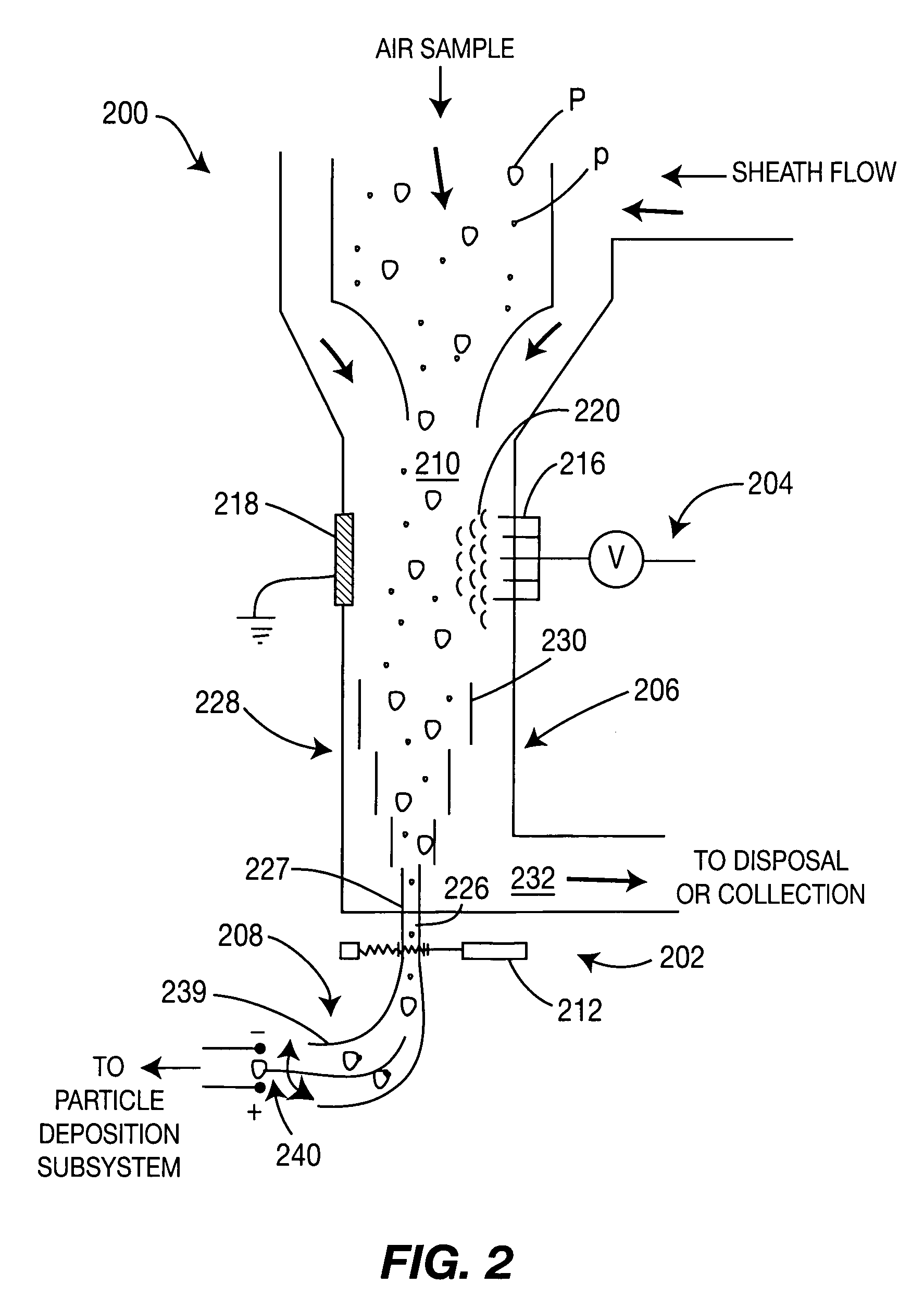Method and apparatus for airborne particle sorting
a particle sorting and airborne technology, applied in the field of air sampling, can solve the problems of increasing particle velocity, less than optimal accuracy of focusing the sorted particles onto a designated target or collection surface, etc., and achieve the effect of even more precise particle focusing
- Summary
- Abstract
- Description
- Claims
- Application Information
AI Technical Summary
Benefits of technology
Problems solved by technology
Method used
Image
Examples
second embodiment
[0039]FIG. 2 is a schematic diagram illustrating a particle sorting system 200 according to the present invention. In one embodiment, the system 200 is substantially similar to the particle sorting system 100 illustrated in FIG. 1 and comprises four main components: a spectrographic identification subsystem 202, a particle charging section 204, a particle focusing section 206 and a particle deposition subsystem 208. However, the four main components of the system 200 are configured in a slightly different manner with respect to the configuration of the particle sorting system 100.
[0040]In one embodiment, the particle charging section 204 comprises a flow shaft 210 that is adapted to receive an incoming air sample (containing one or more different types of particles). In addition the flow shaft 210 is adapted to receive a sheath flow that combines with the incoming air sample to form a combined stream for better transporting particles contained within the air sample to other componen...
third embodiment
[0052]FIG. 5 is a schematic diagram illustrating a particle sorting system 500 according to the present invention. In one embodiment, the particle sorting system 500 comprises four main components: a spectrographic identification subsystem 502, a particle charging section 504, a particle focusing section 506 and a particle deposition subsystem 508. However, these four main components of the system 500 are configured in a manner that is different with respect to the configuration of the components of the particle sorting systems 100 and 200 discussed above.
[0053]In one embodiment, the particle charging section 504 comprises an air sample shaft 540 and an array of electrodes 516. The air sample shaft 540 is adapted to deliver an air sample to the particle sorting system 500 (e.g., from a virtual impactor or other sample collection means), and includes a first end 542 that opens into a larger flow shaft 510 or deposition chamber, where the air sample combines with a sheath flow to form...
PUM
| Property | Measurement | Unit |
|---|---|---|
| velocity | aaaaa | aaaaa |
| diameter | aaaaa | aaaaa |
| electrostatic field | aaaaa | aaaaa |
Abstract
Description
Claims
Application Information
 Login to View More
Login to View More - R&D
- Intellectual Property
- Life Sciences
- Materials
- Tech Scout
- Unparalleled Data Quality
- Higher Quality Content
- 60% Fewer Hallucinations
Browse by: Latest US Patents, China's latest patents, Technical Efficacy Thesaurus, Application Domain, Technology Topic, Popular Technical Reports.
© 2025 PatSnap. All rights reserved.Legal|Privacy policy|Modern Slavery Act Transparency Statement|Sitemap|About US| Contact US: help@patsnap.com



